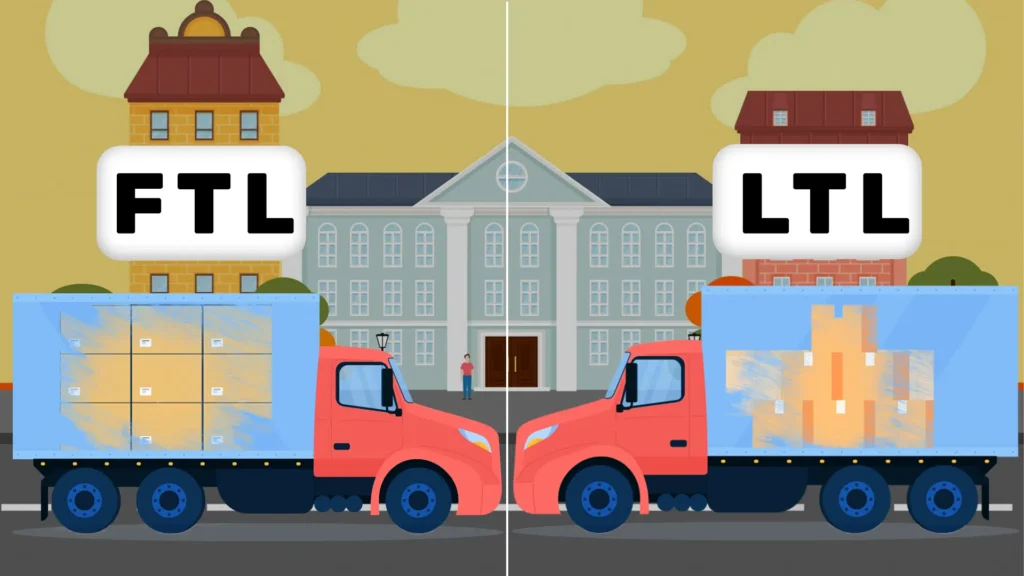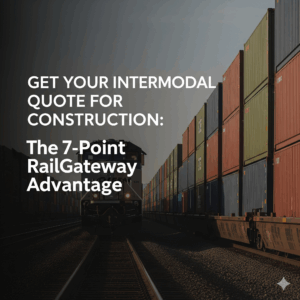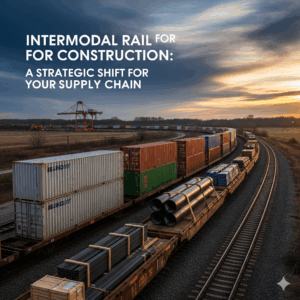In the complex and competitive world of logistics, understanding the difference between LTL vs FTL shipping in Canada is more important than ever. As 2025 introduces new supply chain pressures—from higher consumer expectations to evolving fuel and carrier costs—businesses of all sizes must make smarter, data-driven decisions about how they move their freight. Whether you’re a growing e-commerce brand shipping across provinces or a national distributor managing high-volume lanes, choosing between Less-than-Truckload (LTL) and Full Truckload (FTL) shipping can significantly impact your bottom line, delivery times, and customer satisfaction.
So, what’s the best choice for your freight? The answer depends on a range of factors including volume, budget, timing, and geographic reach. This comprehensive guide to LTL vs FTL shipping in Canada will help you navigate the differences, benefits, challenges, and strategic considerations for each method—so you can ship smarter, faster, and more profitably in 2025.

What is LTL Shipping?
LTL (Less-than-Truckload) shipping is a freight mode used when shipments do not require an entire trailer. Instead of reserving the full capacity of a truck, your freight shares space with shipments from other businesses, reducing cost and environmental impact. In Canada, LTL shipping is popular among small and medium-sized enterprises (SMEs), as well as companies shipping smaller volumes on a more frequent basis.
LTL carriers in Canada typically operate on established regional and national routes, making multiple pick-ups and deliveries in a single run. This efficiency means lower costs per shipment, but it may also result in slightly longer transit times due to multiple handling and stops. Still, for shipments between 150 and 10,000 pounds, LTL shipping in Canada offers a highly economical and scalable logistics solution.
Key Features of LTL Shipping:
- Cost-Effective: You only pay for the portion of the truck space you use.
- Frequent Handling: Shipments may be loaded and unloaded multiple times at different terminals.
- Longer Transit Times: Because of multiple stops and consolidations, deliveries may take longer.
- Ideal for Small Shipments: Suitable for cargo typically ranging between 150 to 15,000 pounds.
How LTL Pricing Works
LTL shipping costs are calculated based on:
- Weight & Dimensions: Heavier and bulkier shipments cost more.
- Freight Class (NMFC Rating): The National Motor Freight Classification (NMFC) system categorizes goods based on their density, handling requirements, and liability risks.
- Distance: Longer shipping distances result in higher costs.
- Additional Services: Special requirements like liftgate delivery, residential service, or white-glove service can increase the price.
What is FTL Shipping?
On the other hand, FTL (Full Truckload) shipping involves reserving an entire truck exclusively for your shipment. This method is ideal for businesses moving large volumes (typically over 10,000 pounds) or freight that is high-value, time-sensitive, or requires minimal handling. In FTL shipping in Canada, the truck travels directly from origin to destination with no detours or intermediate stops, providing faster transit times and greater cargo security.
FTL is also preferred for shipments requiring specific trailer types—such as reefers for temperature-sensitive goods or flatbeds for oversized cargo. While FTL typically costs more upfront, it can be more cost-effective on a per-unit basis when shipping large or high-value loads.
Key Features of FTL Shipping:
- Faster Transit Times: Shipments move directly from the pickup location to the delivery point without multiple stops.
- Higher Cost: Since you’re renting the entire truck, the cost is generally higher compared to LTL.
- Safer for Fragile Goods: Fewer touchpoints mean reduced chances of damage.
- Best for Large Shipments: Typically used for cargo over 15,000 pounds or more than 10 pallets.
How FTL Pricing Works
FTL shipping costs are determined by:
- Distance: The longer the route, the higher the price.
- Truck Availability: Seasonal demand can impact rates.
- Special Equipment Needs: Refrigerated trucks or flatbeds can increase costs.
- Fuel Prices: Fluctuations in fuel prices directly affect FTL shipping costs.
Why LTL vs FTL Shipping in Canada Matters in 2025
Shipping trends across Canada in 2025 reflect a mix of domestic growth, increased U.S. cross-border trade, and rising demand for efficient, transparent freight services. Choosing the right shipping method—LTL or FTL—can determine whether your operations are lean and profitable or burdened by inefficiencies and delays.
Factors that make this decision more critical than ever include:
- Fuel costs and carbon tax regulations: These impact the economics of both modes differently.
- E-commerce expansion: More businesses need flexible, cost-effective solutions like LTL for B2C and D2C shipping.
- Supply chain digitization: Technology enables better tracking, route optimization, and load consolidation for both FTL and LTL.
- Carrier availability: The Canadian freight market continues to experience driver shortages and regional imbalances, making agility essential.
Whether you’re shipping between provinces or across the U.S. border, your ability to choose between LTL vs FTL shipping in Canada can determine your service quality and competitive edge.
Cost Comparison: LTL vs FTL Shipping in Canada
One of the first questions businesses ask is: Which is cheaper—LTL or FTL? The answer lies in the size and frequency of your shipments.
- LTL shipping is usually less expensive for smaller loads, since you’re only paying for the portion of the trailer you use.
- FTL shipping can be more cost-effective for high-volume shipments, as you’re paying for the entire truck but maximizing capacity.
- Hidden costs such as reclassification, accessorial fees, or delays from multiple stops may affect LTL pricing, while FTL provides more predictable costs for long hauls.
Understanding your freight profile—how much you ship, how often, and how urgently—is key to maximizing cost efficiency.
Transit Time Considerations
Speed is another key differentiator in the LTL vs FTL shipping in Canada debate.
- LTL shipments are subject to multiple pick-up and drop-off points, warehouse transfers, and sorting. This means longer delivery windows, especially across provinces or rural areas.
- FTL shipments, by contrast, travel directly to the delivery point, reducing overall transit time and exposure to delays.
If your business relies on just-in-time inventory or time-critical delivery commitments, FTL may offer the reliability you need.
Risk, Security & Handling
When choosing between LTL and FTL, cargo handling is a major concern:
- LTL freight is handled more frequently, increasing the chance of damage or loss—especially for fragile, high-value, or irregularly shaped items.
- FTL freight is loaded once and remains sealed until it reaches its destination, offering greater security and less risk of mishandling.
For businesses shipping sensitive products such as electronics, perishables, or pharmaceuticals, FTL shipping in Canada may be the safer option despite higher costs.
Final-Mile Considerations
Canada’s vast geography and mix of urban and remote delivery zones add another layer of complexity to shipping decisions:
- LTL carriers may not service remote areas directly, relying instead on interline partners, which can cause delays or limited tracking visibility.
- FTL carriers are better suited for direct delivery, even to non-standard destinations such as warehouses, farms, or construction sites.
In 2025, the rise of regional distribution hubs and intermodal logistics makes it easier than ever to combine both LTL and FTL shipping in a hybrid strategy – ensuring cost control and delivery precision.
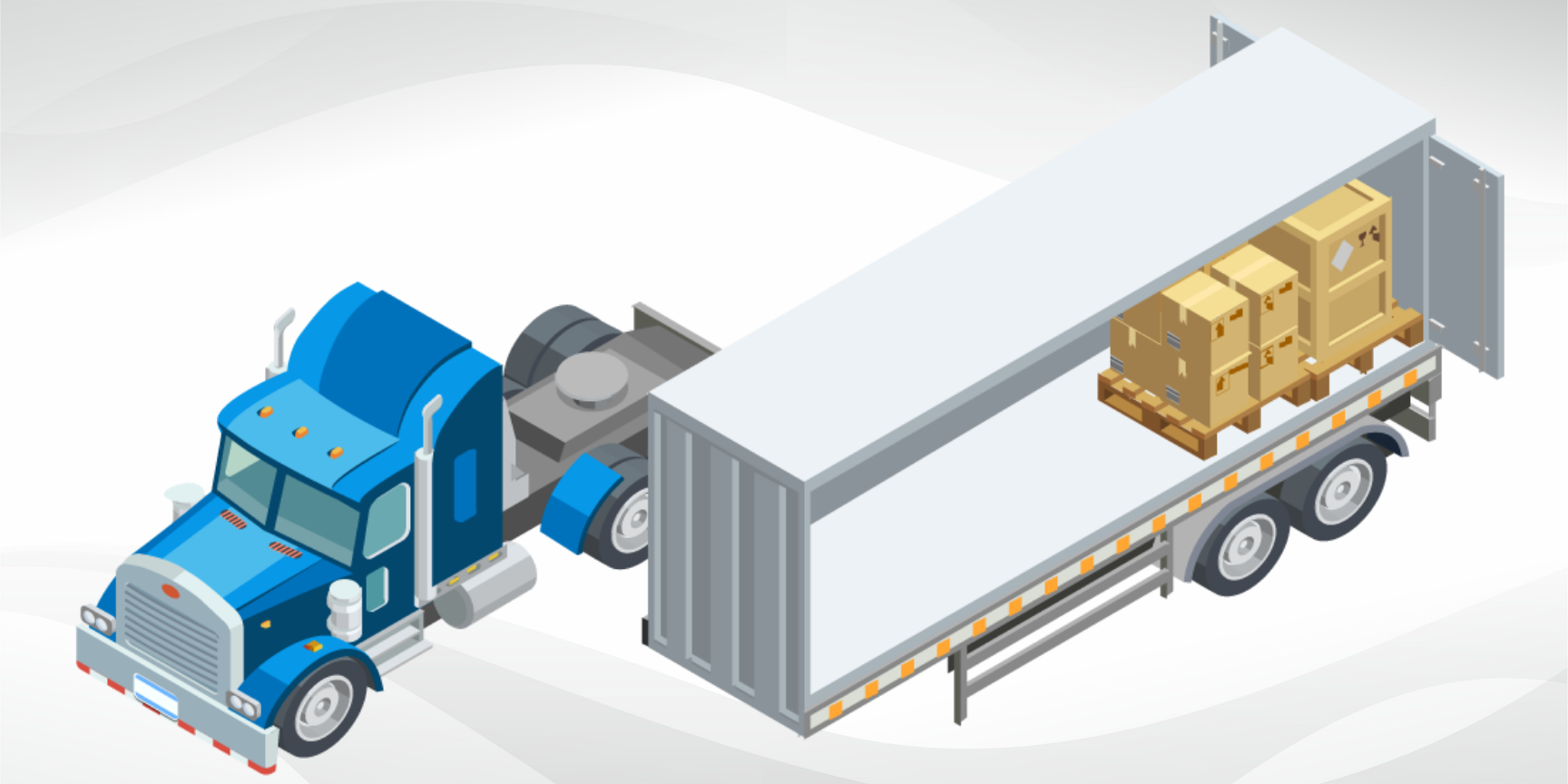
LTL vs FTL Shipping in Canada: A Detailed Comparison
Choosing between LTL and FTL shipping in Canada isn’t just about cost—it affects delivery speed, cargo security, and overall logistics efficiency. Whether you’re a small business shipping a few pallets or a large enterprise moving full truckloads, understanding the differences can help you make smarter, budget-friendly shipping decisions.
Let’s break down the key factors that set these two freight options apart.
| Feature | LTL Shipping | FTL Shipping |
| Shipment Size & Weight | Ideal for loads between 150 and 15,000 pounds, with up to 10 pallets. | Best for shipments over 15,000 pounds or that require a full trailer. |
| Handling & Fragility | More handling due to multiple stops increases the risk of damage. | Less handling, reducing the chances of damage to fragile or high-value goods. |
| Speed & Delivery Time | Longer transit times due to multiple stops and terminal transfers. | Faster deliveries with a direct route and no unnecessary stops. |
| Cost Efficiency | Lower costs since multiple shippers share the truck space. | Higher costs, but can be more economical for large shipments. |
| Security & Risk | Increased handling can lead to a higher risk of damage or loss. | Safer transport with minimal handling, reducing damage and theft risks. |
| Flexibility | More frequent shipping schedules are available, but they are subject to space availability. | Fixed schedule with dedicated truck use, providing more control over delivery times. |
| Special Requirements | Offers additional services like liftgate, residential pickup, and temperature control. | Can accommodate specialized needs, but with fewer additional service options. |
When to Choose LTL or FTL?
Deciding between LTL and FTL shipping isn’t just about cost. It’s about balancing speed, security, and shipment size. If your freight is small, flexible on delivery times, and budget-conscious, LTL is the way to go.
But if you need faster transit, minimal handling, and dedicated space, FTL is the better choice.
Use LTL Shipping When:
- You are shipping less than 12 pallets.
- Your freight can handle multiple handlings during transit.
- Cost-saving is a priority over fast delivery.
- Your shipment isn’t time-sensitive.
Use FTL Shipping When:
- Your shipment is more than 15,000 pounds or requires a full trailer.
- You’re transporting fragile or high-value goods that require minimal handling.
- Your cargo needs to arrive quickly and securely with no delays.
- You require guaranteed pickup and delivery times.
Factors That Influence Your Decision
Choosing between LTL and FTL shipping in Canada isn’t just about cost. It’s about efficiency, speed, and security. Several factors, such as shipment size, urgency, fragility, and budget, play a crucial role in determining the best freight option.
Understanding these key considerations will help you avoid delays, reduce costs, and improve supply chain efficiency. Let’s break them down.
1. Shipment Volume & Frequency
- If your business ships large volumes frequently, FTL may be a more economical long-term choice.
- If you ship small quantities more often, LTL offers better savings.
2. Budget Constraints
- LTL is a cost-effective solution for smaller shipments.
- FTL may be more cost-efficient for larger shipments where renting an entire truck is justified.
3. Delivery Speed
- If fast delivery is critical, FTL is the better choice.
- If you can tolerate longer transit times, LTL can save money.
4. Cargo Fragility & Security
- High-value or fragile goods should use FTL for reduced handling.
- Standard shipments without security concerns can benefit from LTL
Integrating Intermodal Rail for Cost-Efficient Freight Shipping in Canada
While LTL and FTL are the primary trucking options, intermodal rail shipping offers an alternative that combines the best of both worlds. It ensures cost efficiency and reliability for long-haul freight shipping.
Intermodal shipping moves cargo using a combination of trucks and trains, allowing businesses to optimize costs while reducing their environmental footprint. Compared to FTL trucking, intermodal rail can be a more economical choice for shipments traveling long distances across Canada. It provides:
- Lower Costs for High-Volume Shipments – Rail transport is often cheaper per ton-mile than trucking for longer distances.
- Increased Capacity & Scalability – Ideal for businesses shipping large volumes that exceed standard truckload limits.
- Reliable Transit Times – Rail networks follow fixed schedules, making transit times predictable.
- Reduced Carbon Footprint – A more sustainable shipping option compared to long-haul trucking.
For businesses looking to optimize their freight costs, RailGateway provides efficient intermodal rail shipping services across Canada. Whether you need a cost-effective alternative to FTL or a hybrid solution that leverages rail and truck transport, we can help streamline your logistics.
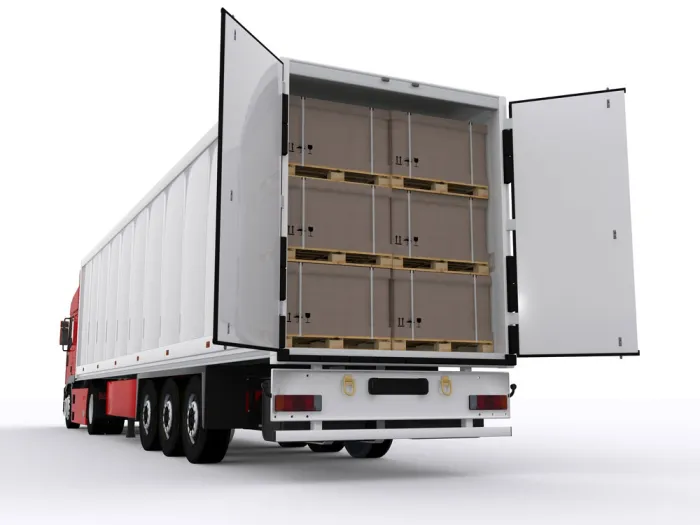
Final Thoughts
As we navigate the evolving logistics landscape in 2025, it’s clear that mastering the difference between LTL vs FTL shipping in Canada is not just useful—it’s essential. Whether you’re a small business shipping modest volumes or a national distributor moving truckloads of product every day, the choices you make around freight strategy have a direct impact on operational efficiency, cost control, and customer satisfaction.
The beauty of today’s Canadian logistics environment is the flexibility it offers. With advanced tracking technology, route optimization, and seamless integration between carriers and systems, shippers are no longer confined to one method. Instead, companies are blending LTL and FTL shipping in Canada to create agile supply chains that respond to customer demands, seasonal fluctuations, and economic shifts in real-time.
When LTL Makes Sense in Canada
LTL shipping in Canada is a practical, cost-efficient solution for companies moving smaller freight volumes or shipping to multiple destinations. It’s ideal when:
- Shipments weigh between 150 to 10,000 pounds.
- Speed is less critical than budget.
- Cargo can tolerate some handling.
- You’re shipping to multiple customers or cities across provinces.
- You’re scaling gradually or testing new distribution markets.
With a strong network of national and regional LTL carriers, Canada offers broad LTL coverage—even in rural areas—with increasingly reliable tracking, predictable delivery windows, and improved damage protection thanks to better packaging practices and tech integration.
LTL is also a sustainable choice. By consolidating freight into fewer trucks, it helps reduce emissions and maximize fuel efficiency—aligning with Canada’s growing emphasis on greener supply chains.
When FTL Shipping Wins in Canada
FTL shipping in Canada shines when speed, security, and simplicity matter most. Choose FTL when:
- You need a dedicated truck for high-volume or heavy freight.
- Transit time is a priority (e.g., perishable, high-value, or time-sensitive goods).
- Your shipment requires specific trailer types (refrigerated, flatbed, etc.).
- You want minimal handling to reduce damage risk.
- You’re serving a direct, long-haul route between major distribution hubs.
In 2025, FTL shipping is faster and smarter than ever. AI-driven routing systems and cross-border clearance automation (especially for U.S.-Canada trade) mean your full truckload can reach its destination more reliably and efficiently, even during capacity crunches or seasonal surges.
A Hybrid Strategy: The Best of Both Worlds
More Canadian shippers are embracing a hybrid freight strategy—using both LTL and FTL shipping depending on the shipment profile. This gives logistics managers the freedom to optimize for cost or time, dynamically switch modes based on carrier availability, and deliver more consistent service to customers across Canada.
For example:
- Use LTL for steady, small orders to multiple retailers.
- Use FTL for consolidated weekly shipments to central warehouses.
- Use LTL for inbound materials, and FTL for outbound finished goods.
With shipping platforms, 3PLs, and freight marketplaces offering real-time mode comparisons, it’s easier than ever to make informed mode decisions that fit your business goals.
Future-Proofing Your Canadian Freight Strategy
As you plan your 2025 logistics roadmap, consider these tips:
- Know your freight profile – Analyze weights, volumes, dimensions, and frequency.
- Use tech tools – Invest in freight management systems that compare LTL and FTL rates, routes, and delivery times.
- Diversify your carrier base – Build relationships with LTL and FTL carriers in key Canadian corridors.
- Plan for scalability – Design flexible workflows that allow for shifting between modes as your shipping needs evolve.
- Stay compliant – Understand Canadian regulations, customs protocols (for cross-border), and accessorial charges that might affect your decision.
Shipping in Canada has never been more dynamic—or more full of opportunity. Whether you’re expanding your footprint across the provinces or refining your distribution strategy in Ontario, Alberta, or B.C., making smart choices between LTL vs FTL shipping in Canada is your key to greater success.
Learn how RailGateway can reduce your shipping costs: Get a quote today!
FAQs
1. Which is cheaper: LTL or FTL?
LTL is generally cheaper for small shipments because costs are shared among multiple shippers. FTL is more cost-efficient for large shipments that fill an entire truck.
2. What’s the main difference between LTL and FTL?
LTL consolidates multiple shipments into one truck, making it cheaper but slower. FTL dedicates an entire truck to a single shipment, providing faster transit and better security.
3. Does LTL or FTL shipping offer better security?
FTL offers better security since the shipment isn’t handled multiple times. LTL has increased handling, which can lead to higher risks of damage or theft.
4. Can I switch between LTL and FTL based on my shipment size?
Yes! Many businesses use both options depending on their shipping needs. Smaller loads can go via LTL, while bulk shipments can be sent using FTL. By understanding these key differences, Canadian businesses can improve efficiency, cut shipping costs, and enhance logistics operations in 2025 and beyond.
How We Can Help
For businesses looking to optimize their freight shipping with reliable, efficient, and cost-effective solutions, RailGateway.ca is your trusted partner in intermodal logistics. Whether you’re new to freight trains or want to enhance your existing supply chain, our team of intermodal experts is ready to guide you every step of the way.
Contact RailGateway.ca today for a free quote or to speak directly with one of our experienced intermodal specialists. Let us help you unlock smarter, smoother shipping solutions tailored to your unique needs.
Visit RailGateway.ca or call us to get started on transforming your freight shipping strategy in 2025 and beyond.

